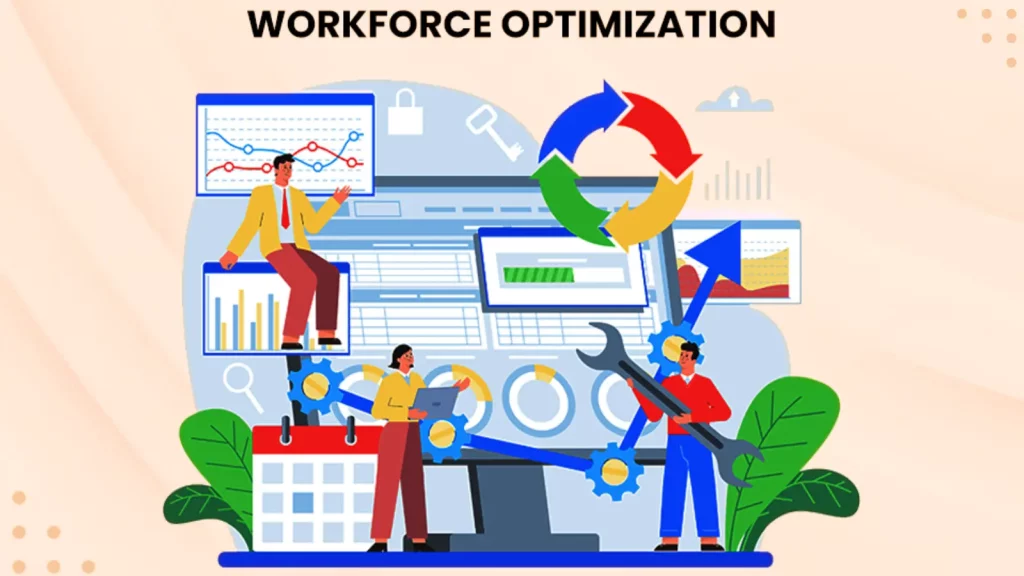The Future of Workforce Optimization: Trends and Insights
The Future of Workforce Optimization: Trends and Insights
Blog Article
Top 10 Workforce Optimization Strategies for 2024
In today's fast-paced business atmosphere, businesses are constantly seeking ways to improve production while reducing operational costs. workforce optimization has surfaced as a proper method to attain these goals. By leveraging advanced resources, knowledge analytics, and employee involvement techniques, corporations can streamline operations, improve efficiency, and foster a more motivated workforce. This blog post will examine different strategies for workforce optimization , providing useful insights and examples for organization leaders looking to boost output and cut costs.
Knowledge Workforce Optimization
Workforce optimization involves an extensive way of managing and increasing employee performance, output, and satisfaction. It includes technology, knowledge analysis, and individual resource management to arrange workforce activities with organizational goals. By optimizing the workforce, businesses can ensure that the proper people are in the best roles, doing the proper jobs at the right time.

Leveraging Engineering for Better Management
Engineering represents a crucial position in workforce optimization. Sophisticated computer software options will help managers monitor staff performance, track development, and identify parts for improvement. For example, workforce administration techniques may automate scheduling, minimize administrative burdens, and ensure that staffing levels match demand. Furthermore, performance administration resources provides real-time feedback to employees, supporting them keep on the right track and enhance their output.
Information Analytics and Decision Making
Data analytics is a effective instrument for workforce optimization. By analyzing information on employee performance, attendance, and productivity, businesses can obtain important insights into workforce traits and patterns. This information can be used to make knowledgeable choices about staffing, training, and source allocation. For example, knowledge evaluation may reveal maximum production hours, letting managers to routine shifts appropriately and maximize efficiency.
Enhancing Worker Wedding
Employee engagement is a critical component of workforce optimization. Involved employees tend to be more effective, inspired, and committed to their work. To improve diamond, companies may apply numerous methods such as for example standard feedback, acceptance applications, and options for professional development. Making a good work environment wherever personnel feel respected and reinforced can lead to higher work pleasure and improved performance.
Implementing Variable Perform Measures
Variable function arrangements, such as for example distant perform and variable hours, may significantly donate to workforce optimization. These preparations may lessen operational prices, such as for instance company space and resources, while providing workers with an improved work-life balance. Additionally, variable function possibilities can entice prime skill and raise retention charges, further increasing production and lowering recruiting costs.
Purchasing Employee Instruction
Continuous training and progress are essential for maintaining a talented and successful workforce. By investing in worker teaching applications, organizations can ensure that their team remains up-to-date with the most recent market styles and technologies. Well-trained workers tend to be more effective at managing complicated responsibilities, resolving issues, and changing to changes, leading to improved production and paid down fees related to mistakes or inefficiencies.
Streamlining Operations and Workflows
Optimizing workflows and techniques is still another effective way to enhance output and reduce costs. Businesses may use method mapping and analysis to spot bottlenecks, redundancies, and inefficiencies within their operations. By streamlining these operations, businesses can eliminate waste, minimize setbacks, and improve over all efficiency. Utilizing lean principles and constant improvement methodologies may more increase workflow optimization efforts.
Applying Performance Metrics
Efficiency metrics are important for tracking and analyzing workforce optimization efforts. Essential efficiency indications (KPIs) such as for example staff output, absenteeism rates, and customer care can offer important ideas into the effectiveness of optimization strategies. Regularly reviewing these metrics allows managers to identify parts for development, produce data-driven choices, and track progress towards organizational goals.
Encouraging Effort and Teamwork
Fostering a lifestyle of effort and teamwork may have an optimistic affect workforce optimization. Stimulating workers to work together, share ideas, and help each other may cause improved advancement, problem-solving, and overall productivity. Team-building activities, cooperation tools, and start communication programs can help develop a logical and determined workforce.
Aiming Workforce Goals with Company Objectives
To accomplish successful workforce optimization , it's crucial to arrange staff goals with overall business objectives. That positioning assures that every group member understands their role in the organization and operates towards common goals. Obvious transmission of company vision, vision, and values will help workers begin to see the bigger picture and keep determined to subscribe to the organization's success.

Tracking and Establishing Methods
Workforce optimization is an ongoing method that will require constant checking and adaptation. Regularly researching optimization techniques, collecting feedback from employees, and keeping current with business traits can help businesses keep agile and attentive to changing needs. By outstanding flexible and available to new strategies, businesses may ensure long-term achievement in workforce optimization efforts.
Conclusion
Workforce optimization is a complex method that may lead to significant improvements in output and cost reduction. By leveraging technology, data analytics, and worker proposal strategies, companies can make a more efficient and inspired workforce. Employing variable perform agreements, buying education, and streamlining processes are just a couple of ways to reach these goals. Fundamentally, effective workforce optimization involves constant tracking, positioning with business objectives, and a commitment to fostering a confident work environment. By adopting these techniques, businesses can increase efficiency, reduce prices, and obtain sustainable growth. Report this page